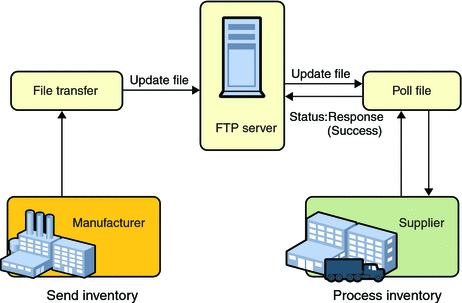Assalam.
Hye, guys! How are you today? How is everything?....>.<
 |
Now,
I want to share with you guys the lesson that we learned in our 7th
class.
That day, we learned about electronic mail or e-mail. The world is
getting modern nowadays. I believe that most of us write letters less nowadays
as we already have e-mail which is faster and cheaper, right?..hoho
There
are some advantages if we use in our life. As we all know, usage of e-mail is
faster and cheaper. It is an up-to-date method to post someone a letter if we
use e-mail.
However, e-mail can be easily hacked by the intruders. For example,
someone can use other person’s commercial name instead of using their own name.
Maybe they have bad intention towards us. Some of them also want a sum of big
money and they said that they wanted to use the money for good purpose. They
wanted us to give some of our money to the account number given. Who knows what
their real intention is?
Want
to know more about e-mails? Kindly visit this web page.
Here are the other advantages and disadvantages of e-mail that I did not mention up there.…teehee...>_<....
 |
| Pic of e-mail… |
Then
we learned about BCC and CC.
CC
is the acronym for carbon copy while BCC stands for blind carbon copy. When you
use CC, you are sending a copy of the email to a second person, in addition to
the primary recipient.
When
you BCC someone, the email recipient receives a copy, but no one else can see
that she did.
Protects Your Friends' Identity
Or you can read this link for more information...^^
There
are two types of protocol if we receive e-mail from anybody. They are:
1)
Post
Office Protocol (POP)
2)
Internet
Access Message Protocol (IMAP)
If
we use POP, the message or the mail that we received will not be copy at the server.
On the other hand, if we use IMAP, that mail will be copied at the server. To
make you more understand about these two protocols, see this web page......teehee..>_<
Next, we learned about TelNet and FTP.
TelNet is a TCP/IP terminal emulation Protocol which enables remote login(s) - the ability to login to another computer (the remote computer) from your local computer.
Next, we learned about TelNet and FTP.
TelNet is a TCP/IP terminal emulation Protocol which enables remote login(s) - the ability to login to another computer (the remote computer) from your local computer.
~"Telnet
to a host" means to establish a connection across the Internet from one
host to another. Usually, you must have an account on the remote host to be
able to login
Log
on to a remote computer as a regular user with whatever privileges (you may
have been granted) to the specific application and data.
Visit
this link to find out more about TelNet…..^^
Now,
let’s move on to FTP. Do you know FTP is?
 |
Example of FTP |
FTP
is a protocol that allow computers to communicate with each other across the Internet
to arrange for the transfer of files from one computer to another. FTP ('File Transfer
Protocol') is a way to quickly upload and download files on the Internet. Not
all computers provide FTP service.
Host
(server) computers must run FTP server software to manage connections from
client machines requiring FTP access to the server’s files. FTP provides
clients with a window into the server that displays the files that can be copied
to the client machine’s storage media.
Kindly
visit this webpage to know more about FTP.
There
are two types of FTP
- "anonymous"
- "non-anonymous."
The
most widely used type is anonymous FTP.
If
a file is stored in an anonymous FTP directory virtually anyone with Internet access
and an FTP program of some sort, even a web browser, can download the file. Uploading,
on the other hand, is not usually possible with anonymous FTP.
I think that's all for now. Thank you for reading my blog, guys..see ya.. ;)

No comments:
Post a Comment